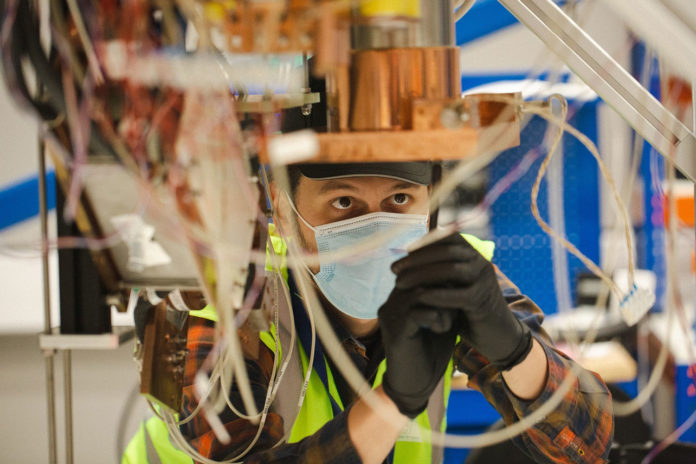Tokamak Energy, a company working on nuclear fusion technology, has recently announced the breakthrough design of cryogenic, or very low temperature, power electronics technology for the high-efficiency operation of its superconducting magnets.
The company is working on fusion technology using a combination of spherical tokamaks along with high-temperature superconducting (HTS) magnets. According to reports, the tests of the new power electronics showed twice the efficiency of previous systems, resulting in a substantial reduction in the power required to cool the HTS magnets, lowering the cost of future fusion power plants – which is key to commercializing and scaling the technology.
The superconducting magnets are used in tokamak fusion reactors to contain and isolate plasma so that it can reach the high temperatures at which are required for the fusion. One of the challenges for the magnets is the cryogenic cooling system, which is one of the biggest power consumption loads on a tokamak. Improving cooling efficiency will reduce costs for future fusion power plants. The Tokamak Energy team’s new approach uses a higher-efficiency power converter within a vacuum cryostat.
“We have now invented a new type of cryogenic power supply, based on the latest power electronics devices, that is highly efficient at low temperatures,” said Chris Kelsall, CEO of Tokamak Energy. “This means we have the potential to reduce cryogenic capital and running costs for HTS magnets by 50%, or more. This novel approach will provide significant cost savings, contributing to the achievement of commercial fusion energy.”
In 2020, Tokamak Energy received five US Department of Energy grants, creating partnerships with leading experts in the US National Laboratory System. Its ST-40 fusion prototype is being developed in partnership with Oak Ridge National Laboratory and Princeton Plasma Physics Laboratory. The company has also received a £10m grant from the UK Government as part of investment under the Advanced Modular Reactor (AMR) program.
In the ST-40 fusion prototype, Tokamak Energy has developed the most advanced compact spherical tokamak in the world – a key enabler of commercial fusion. Plans are underway for the ST-40 to operate at 100 million degrees Celsius by overcoming repulsive forces between deuterium and tritium ions. This will be a key milestone for commercial fusion and the first privately funded fusion module to reach this landmark globally.
Further developmental work will be undertaken to demonstrate this highly efficient form of power supply under 1000A continuous operation and 2000A pulsed operations.
Once realized, fusion energy will be clean, economical, and globally deployable – a key enabler for meeting international climate policy goals.
